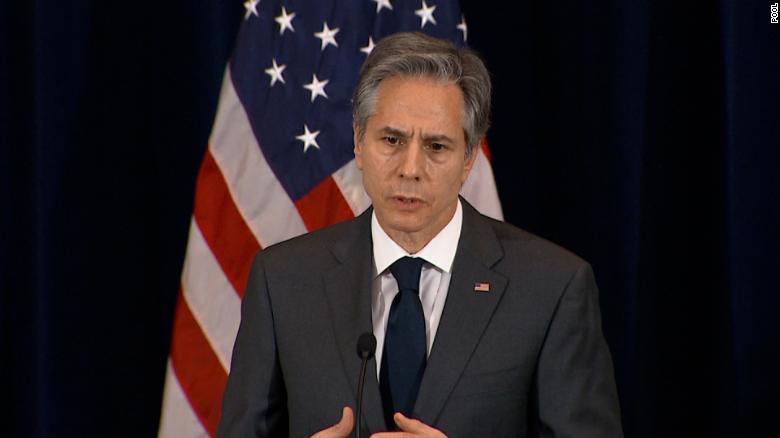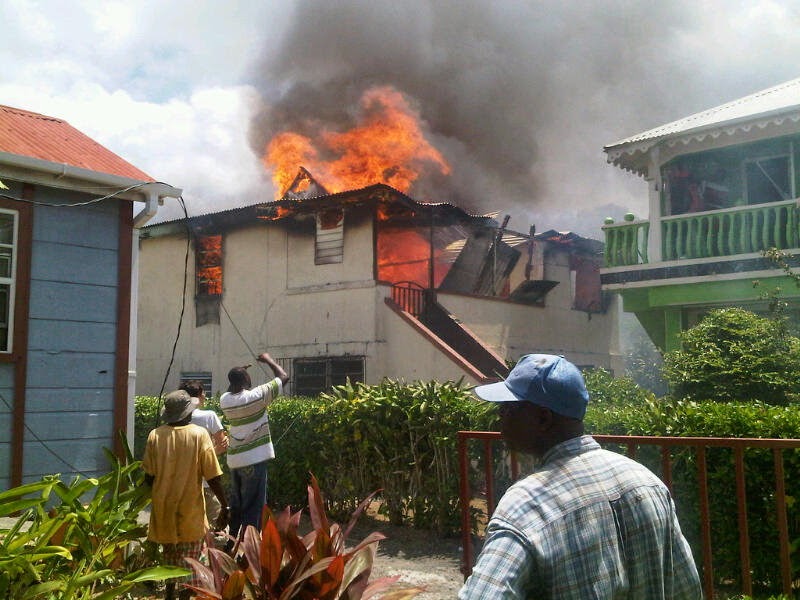Tel Aviv, Israel (AP) — Israeli Prime Minister Benjamin Netanyahu on Friday pushed back against growing U.S. pressure for a “humanitarian pause” in the nearly month-old war to protect civilians and allow more aid into Gaza, insisting there would be no temporary cease-fire until the roughly 240 hostages held by Hamas are released.
U.S. Secretary of State Antony Blinken made his third trip to Israel since the war began, reiterating American support for Israel’s campaign to crush Hamas after its brutal Oct. 7 attack in southern Israel. He also echoed President Joe Biden’s calls for a brief halt in the fighting to address a worsening humanitarian crisis.
Alarm has grown over spiraling Palestinian deaths and deepening misery for civilians from weeks of Israeli bombardment and a widening ground assault that risks even greater casualties. Overwhelmed hospitals say they are nearing collapse, with medicine and fuel running low under the Israeli siege. About 1.5 million people in Gaza, or 70% of the population, have fled their homes, the U.N. said Friday.
Where Israeli Defense Forces are crossing into Gaza

The Associated Press reports that Palestinians are increasingly desperate for the most basic supplies.
The average Gaza resident is now surviving on two pieces of bread per day, much of it made from stockpiled U.N. flour, said Thomas White, Gaza director for the U.N. agency for Palestinian refugees. Demands for drinking water are also growing.
“People are beyond looking for bread,” he told U.N. diplomats in a video briefing from Gaza. “It’s looking for water.”
After talks with Netanyahu, Blinken said a temporary halt was needed to boost aid deliveries and help win the release of the hostages Hamas took during its brutal incursion nearly a month ago.
But Netanyahu said he told Blinken that Israel was “going with full steam ahead,” unless hostages are released.
U.S. officials initially said they were not seeking a cease-fire, but short pauses in specific areas to allow aid deliveries or other humanitarian activity, after which Israeli operations would resume. Netanyahu has not publicly addressed the idea and has instead repeatedly ruled out a cease-fire.
On Friday, however, a senior U.S. administration official said policymakers believe a “fairly significant pause” in fighting will be needed to allow for releases. The idea is modeled on a smaller-scale pause that allowed the freeing of two American hostages from Hamas captivity last month.
The official, speaking on condition of anonymity to discuss the matter, said that release was a “testing pilot” for how a broader deal could be struck and said negotiations on a “larger package” of hostages are ongoing. The official emphasized it would require a significant pause in fighting to ensure their safety to the Gaza border.
Israeli troops tightened their encirclement of Gaza City amid continued battles with Hamas militants as airstrikes wreaked havoc around the city, the largest in the tiny Mediterranean territory. Al Jazeera TV reported that a strike late Friday hit a school in Gaza City where many were taking refuge, causing casualties.
Strikes hit near the entrances of three hospitals in northern Gaza just as staff were trying to evacuate wounded to the south, hospital directors said. Footage showed the aftermath outside Gaza’s largest hospital, Shifa, where more than a dozen bloodied bodies of men, women and young children were strewn next to damaged cars and ambulances. One bleeding boy screamed as he huddled on top of a woman sprawled on the pavement.
At least 15 people were killed and 60 wounded outside Shifa Hospital, said Health Ministry spokesperson Ashraf al-Qidra. At least 50 others were killed or wounded in a strike outside the Indonesian Hospital, its director said, without providing more precise figures.
The Israeli military said its aircraft Friday hit an ambulance that Hamas fighters were using to carry weapons. The claim could not be independently verified. It was not clear whether the strike was connected to the one by Shifa Hospital. The military said it took place “near a battle zone,” suggesting it was close to ongoing ground battles.
Al-Qidra said a convoy of ambulances left Shifa, carrying wounded to Rafah, when a strike hit a vehicle on the edges of Gaza City. The convoy turned around, and another strike hit another ambulance. He denied that any of the ambulances were used by Hamas fighters.
FEARS OVER NEW FRONTS
Throughout the war, Israel and Hezbollah have traded fire almost daily along the Lebanon border, raising fears of a new front opening there.
In his first public speech since the war began, Hezbollah leader Hassan Nasrallah said the cross-border fighting showed his group had “entered the battle.”
He suggested escalation was possible: “We will not be limited to this.” But he gave little sign that Hezbollah would fully engage in the fighting. So far, Hezbollah has taken calculated steps to show backing for Hamas without igniting an all-out war that would be devastating for Lebanon and Israel.
Thursday saw one of the heaviest exchanges over the border yet. Hezbollah attacked Israeli military positions in northern Israel with drones, mortar fire and suicide drones, and Israeli warplanes and helicopter gunships retaliated with strikes in Lebanon. Israeli military spokesman Rear Adm. Daniel Hagari said civilians were wounded in the Hezbollah attacks.
“We are in a high state of readiness in the north, in a very high state of alert,” he said.
The exchanges since the start of the war have killed 10 Lebanese civilians and 66 fighters from Hezbollah and other militant groups, as well as seven Israeli soldiers and a civilian in northern Israel.
GAZA CITY ENCIRCLED
More than 9,200 Palestinians have been killed in Gaza so far, two thirds of them women and minors, the Gaza Health Ministry said, without providing a breakdown between civilians and fighters.
More than 1,400 people have died on the Israeli side, mainly civilians killed during Hamas’ initial attack. Rocket fire by Gaza militants into Israel has continued, disrupting life for millions of people and forcing an estimated 250,000 people to evacuate towns in northern and southern Israel. Most rockets are intercepted.
Twenty-four Israeli soldiers have been killed in Gaza since the start of the ground operation.
The toll is likely to rise dramatically. Israeli military officials said their forces have encircled densely built-up Gaza City and began Friday to launch targeted attacks within the city on militant cells.
Hundreds of thousands of Palestinians remain in the city and nearby parts of northern Gaza. Israel says Hamas has extensive military infrastructure in the city, including a network of underground tunnels, bunkers and command centers. It says its strikes target Hamas and the militants endanger civilians by operating among them.
Friday’s strike outside Shifa Hospital came after Israel said Hamas has a command center at the facility — a claim that could not be independently verified and that Hamas and hospital officials deny. The Palestinian Red Crescent said a strike damaged one of its ambulances carrying wounded to southern Gaza on the coastal highway. The agency posted images of the vehicle with its hood destroyed and blood on the side.
Since the start of the conflict, Israeli strikes have destroyed 25 ambulances, Qidra said.
The military said its troops have killed numerous Hamas militants exiting tunnels. Footage released by the military showed soldiers and tanks advancing toward bombed out buildings.
Israel has repeatedly told residents of Gaza’s north to evacuate to the south for greater safety. But many have been unable to leave or to stay in the south, fearing continued airstrikes there.
The military on Thursday told residents to evacuate the Shati refugee camp on Gaza City’s edge. On Friday, shells hit a convoy of evacuees on the coastal road they were told to use, killing around a dozen people, doctors said. Footage from the road showed dead children lying in the sand.
Further south, workers pulled 17 bodies from the rubble of a building leveled by a strike in Khan Younis, witnesses said. Associated Press images showed rescuers digging with bare hands to save someone completely buried, with one arm protruding from the wreckage. At a hospital, a crying man held up the dead body of a small girl whose lower limbs appeared to be missing.
In the occupied West Bank overnight, Israeli forces killed seven Palestinians in different places and arrested many more, according to the Israeli military and Palestinian health officials.
More than 386 Palestinian dual nationals and wounded exited Gaza into Egypt on Friday, according to Wael Abou Omar, the Hamas spokesman for the Rafah border crossing. That brings the total who have gotten out since Wednesday to 1,115.
Israel has allowed more than 300 trucks carrying food and medicine into Gaza, but aid workers say it’s not nearly enough. Israeli authorities have refused to allow fuel in, saying Hamas is hoarding fuel for military use and would steal new supplies.






